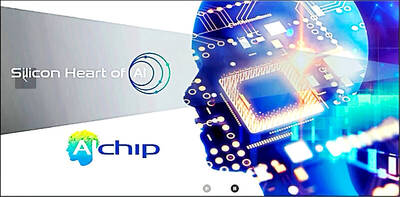Nokia Oyj has reported better than expected second-quarter earnings on the back of improved margins for telecoms equipment and software despite the COVID-19 pandemic causing a substantial drop in revenue.
The Espoo, Finland-based maker of new-generation 5G mobile and other networks yesterday said that its net profit for the April-to-June period was up 22 percent at 316 million euros (US$374.16 million). Sales were down 11 percent at 5.1 billion euros.
Nokia estimated that the COVID-19 crisis hurt its net sales by about 300 million euros in the second quarter and about 500 million euros in the first half of this year.
“We expect that the majority of sales missed in the [second] quarter due to COVID-19 will shift to future periods,” Nokia CEO Rajeev Suri said, adding that Nokia has concluded 83 commercial deals for 5G.
Along with China’s Huawei Technologies Co (華為) and Sweden’s Ericsson AB, Nokia is one of the three main providers of 5G networks.
Huawei is at the center of a US-China dispute over technology, with US President Donald Trump’s administration saying that it can help the Chinese government spy on people, a claim the company denies.
Yesterday marked the last day as Nokia CEO for Suri, a company veteran with 25 years in service and head of the company since 2014. His appointed successor, Pekka Lundmark, takes over today.
Lundmark, 56, is a former CEO of the Finnish energy group Fortum. He worked at Nokia in various executive positions from 1990 to 2000.
In May, shareholders approved the appointment of Sari Baldauf, who has an extensive Nokia background, as the firm’s new chair.

To many, Tatu City on the outskirts of Nairobi looks like a success. The first city entirely built by a private company to be operational in east Africa, with about 25,000 people living and working there, it accounts for about two-thirds of all foreign investment in Kenya. Its low-tax status has attracted more than 100 businesses including Heineken, coffee brand Dormans, and the biggest call-center and cold-chain transport firms in the region. However, to some local politicians, Tatu City has looked more like a target for extortion. A parade of governors have demanded land worth millions of dollars in exchange

An Indonesian animated movie is smashing regional box office records and could be set for wider success as it prepares to open beyond the Southeast Asian archipelago’s silver screens. Jumbo — a film based on the adventures of main character, Don, a large orphaned Indonesian boy facing bullying at school — last month became the highest-grossing Southeast Asian animated film, raking in more than US$8 million. Released at the end of March to coincide with the Eid holidays after the Islamic fasting month of Ramadan, the movie has hit 8 million ticket sales, the third-highest in Indonesian cinema history, Film

Taiwan Semiconductor Manufacturing Co’s (TSMC, 台積電) revenue jumped 48 percent last month, underscoring how electronics firms scrambled to acquire essential components before global tariffs took effect. The main chipmaker for Apple Inc and Nvidia Corp reported monthly sales of NT$349.6 billion (US$11.6 billion). That compares with the average analysts’ estimate for a 38 percent rise in second-quarter revenue. US President Donald Trump’s trade war is prompting economists to retool GDP forecasts worldwide, casting doubt over the outlook for everything from iPhone demand to computing and datacenter construction. However, TSMC — a barometer for global tech spending given its central role in the

Alchip Technologies Ltd (世芯), an application-specific integrated circuit (ASIC) designer specializing in server chips, expects revenue to decline this year due to sagging demand for 5-nanometer artificial intelligence (AI) chips from a North America-based major customer, a company executive said yesterday. That would be the first contraction in revenue for Alchip as it has been enjoying strong revenue growth over the past few years, benefiting from cloud-service providers’ moves to reduce dependence on Nvidia Corp’s expensive AI chips by building their own AI accelerator by outsourcing chip design. The 5-nanometer chip was supposed to be a new growth engine as the lifecycle